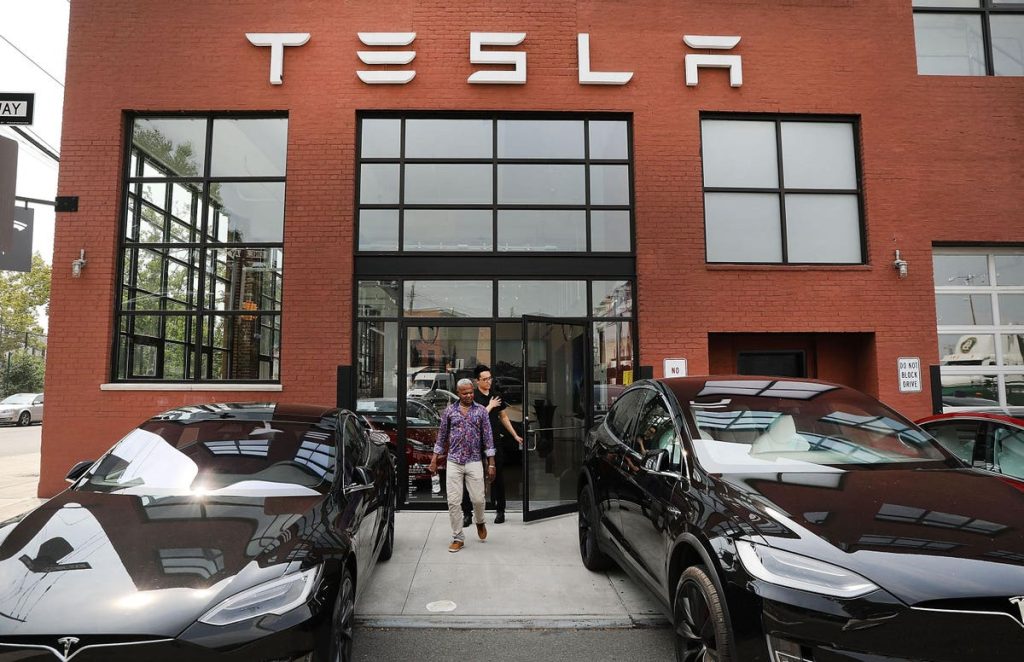Tesla beat expectations when it reported its latest earnings July 19 — yet its stock fell following the company’s investor conference call after forecasting price cuts and declining third quarter production.
Should investors use the dip to buy Tesla stock? Yes, they should.
Despite some dark clouds in its future — most notably relatively poor product quality and Gen-Z hesitancy about owning electric vehicles — the automaker’s overall picture looks bright thanks to EV industry growth and the company’s ability to adapt more quickly than rivals to changing market conditions.
Tesla’s Mixed Second Quarter Report
Tesla’s second quarter results exceeded investor expectations and its guidance was vague — suggesting production and revenue might be lower than expected in the third quarter. Tesla stock fell 7% in July 20 morning trading.
Tesla’s Second Quarter Beat
Tesla exceeded revenue and earnings per share expectations and its margins were relatively low.
According to CNBC, here are some key Q2 results:
- Revenue $24.93 billion, up 47% and $460 million more than expected according to Refinitiv.
- Adjusted Earnings Per Share: 91 cents, nine cents more than Refinitiv’s forecast.
- Operating margins: 9.6%, the lowest for at least the last five quarters.
- Gross margin: 18.2%, also a low for the same period.
Tesla’s Vague Guidance
Investors gave a thumbs-down response to Musk’s comments during the investor conference call. According to CNBC, here are the low-lights:
- Vague guidance on Cybertruck and robotaxi-ready vehicle. Musk and other Tesla executives declined to provide precise specifications and start of delivery dates for Tesla’s Cybertruck or its robotaxi-ready vehicle.
- Q3 production slowdown. Musk and other executives said factories would shut down in Q3 to implement improvements which would slow down vehicle production.
- No margin stabilization. Musk did not tell investors when gross margins would stabilize or rise after price cuts and factory improvements. Musk said the margin declines would “look silly” once Tesla has implemented “autonomy” — which I guess means using technology to lower production costs.
- Price cuts could continue. The Wall Street Journal reported in 2023 that Tesla would cut its starting prices in the U.S. between 14% and 28%. Reuters reported that since late 2022, Tesla has cut prices “several times in the United States, China and other markets,” and increased discounts and incentives to slash inventory. Musk said he reduced prices to shield Tesla against competition and economic uncertainty.
- Rising R&D expenses. Tesla’s R&D costs rose 22% to $943 million between the first and second quarter with considerable funds going to AI development, noted CNBC.
Dark Clouds In Tesla’s Future
Tesla’s future has some dark clouds. Here are two that come to mind.
Gen-Z May Be Skeptical Of Tesla And EVs
In April, 80 students in my undergraduate strategy class suggested the love affair with Tesla and EVs more generally could be fading. While teaching a case study I co-authored, Apple’s Electric Vehicle (published June 22), I asked students to comment on whether they or their friends or family had considered purchasing a Tesla.
Surprisingly, none had done so. They saw EVs as dangerous — citing fires; the risks of running out of battery charge in a location far from a charging station; and overhyped environmental benefits — due to the social costs of mining cobalt for batteries and the coal used to power the charging stations.
Poor EV Quality
EVs have relatively poor quality. According to Men’s Journal, U.S. EV manufacturers ranked “dead last” in the June 2023 J.D. Power Initial Quality Study.
How so? J.D. Power’s “223-question survey, which analyzes problems that arise in the early ownership period of a new vehicle, was based on responses from 93,380 purchasers and lessees of new 2023 model-year vehicles,” Men’s Journal noted.
J.D. Power rates vehicles on problems reported per 100 vehicles (PP 100) in nine categories including infotainment, exterior, driving assistance, interior, powertrain, seats, driving experience, and climate.
Tesla was third from the bottom compared to its EV peers with 257 PP100. Lucid (313) and Polestar (282) were worse than Tesla.
TopSpeed lists 15 problems with Tesla’s SUVs — some of which strike me as particularly scary. These include “Tesla Power Steering Problems Can Be Life-Threatening” and “Replacing Tesla Batteries Is No Fun.”
In 2021, Musk blamed the quality problems on Tesla’s production ramp up, according to CNN.
Frank Hanley, senior director of auto benchmarking at J.D. Power, wrote in a press release, “The automotive industry is facing a wide range of quality problems, a phenomenon not seen in the 37-year history of the IQS.”
Tesla’s Future Strengths
While these are significant problems, Tesla is a leader in a large, rapidly-growing industry. What’s more, Tesla has a clear strategy for maintaining its lead.
The EV industry is growing rapidly even as the global car business is moribund. Between 2018 and 2023, IBIS World expects the Global Hybrid and EV industry to grow at a 24% annual rate to $48.1 billion. During the period, the global car and automobile industry declined at a 0.6% annual rate to $2.9 trillion, according to Apple’s
AAPL
Tesla’s strategy has given it a leading position in the EV industry — about 62% market share in 2022, according to Bank Of America research. Tesla’s strategy has also resulted in a 62% rise in free cash flow to $1 billion — leaving it with $23 billion in cash and investments in the second quarter of 2023, noted the Journal.
Meanwhile, Tesla is focused not on maximizing cash flow but on boosting production at a 41% average annual rate from 1.31 million vehicles in 2022 to 20 million vehicles by 2030. Here are the key elements of its strategy:
- Cut prices to boost demand
- Invest in technology to lower production costs
- Add new products — such as the Cybertruck and robotaxi-ready vehicle
- Build new manufacturing facilities to meet production targets
Where Tesla Stock Goes Next
While some analysts are bullish about Tesla, the stock is overvalued, according to analysts who have set a 12-month price target.
According to CNN Business, the average price target — based on 30 Wall Street analysts’ 12-month price targets — is $237.50 — suggesting its shares are about 12% overvalued.
Nevertheless, some analysts are bullish about Tesla because they see its rapid growth as giving it a competitive advantage. Wedbush wrote in a note, “Multiple rounds of aggressive price cuts has put Tesla in a position of strength after building its EV castle and now is set to further monetize its success.”
Another analyst is less sanguine. Reuters reported Thomas Martin, a portfolio manager at Globalt Investments, said, “It’s a fine line. They are trying to get the prices right so they can generate the demand for the units, and then they like to run their factories as efficiently as they can … they don’t want to build up those inventories.”
I think Tesla’s stock will recover if the company can exceed its goal of producing two million vehicles in 2023. If Tesla exceeds lowered Q3 expectations, that goal could be in reach.
Read the full article here














